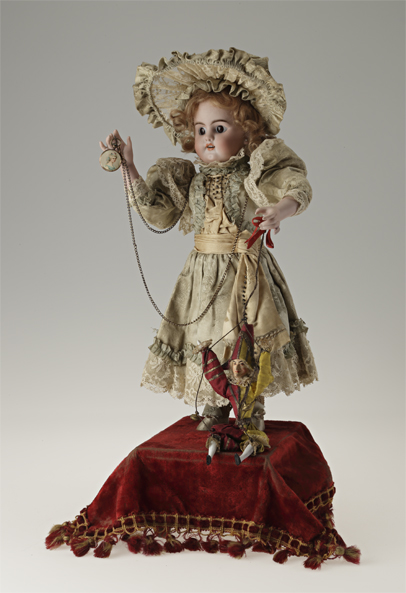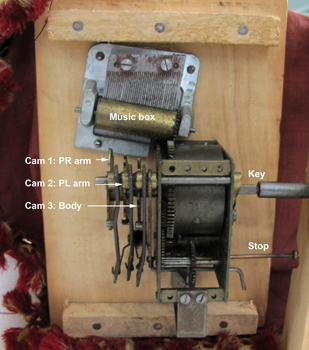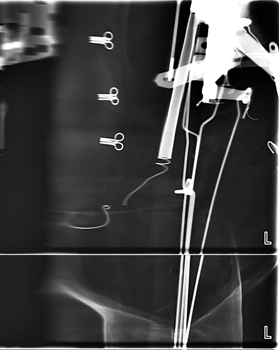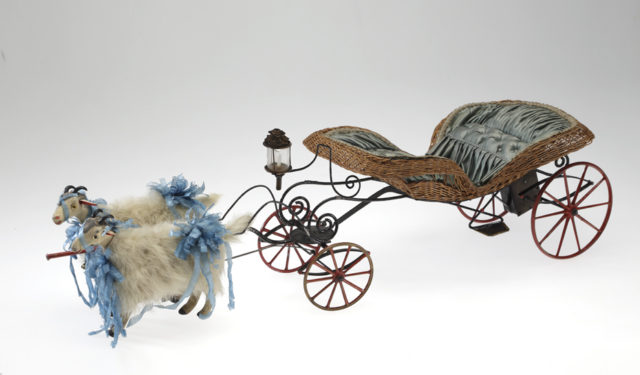What Makes Her Tick? The Conservation of an Automaton Doll
Get a detailed look at the mechanism inside an automaton doll with a long history.
November 13, 2017
Every fall, preparations for the Museum’s annual toy exhibition give conservators the opportunity to work with objects from the McCord’s outstanding collection of toys and games, as well as other items from our Decorative Arts collection. This year an automaton doll—who for the next few months will play the key role of Carabosse, the wicked fairy in this year’s exhibition, The Topsy-Turvy Storyland—was the main focus of examination and treatment.
This doll was made by the well-known Parisian automaton doll maker, Léopold Lambert, who opened shop in 1886. Beautifully dressed in a made-to-measure outfit with matching hat, she stands on a platform that holds the gears controlling her movement. In the past, turning the key on the side of the box activated a pantomime, during which she shook a marionette dangling from her left hand, while glancing at a pocket watch held in her right.
The mechanism no longer worked, so we decided to consult a master clockmaker to determine if it was repairable. His verdict was that it might very well be, but that this could only be confirmed with more information about the parts of the mechanism hidden inside the doll. We then had the doll x-rayed to trace the path of the rods, springs and levers lodged in its interior.
The x-ray revealed that a large spring attaching the shoulder mechanism to the back was broken, but apart from that, everything else was seemingly intact. Armed with this information, we decided it was worthwhile to remove the back of the doll and examine the interior. What we found was a mechanism so corroded and worn that it was beyond repair: new pieces would have to be made to allow it to function again.
Such a treatment would impose substantial material changes to the object, with the loss of important historic information, and the complete dismantling of the doll would present unacceptable risks to the integrity of its other components. We decided against going forward. Although the doll will unfortunately never work again, its movements can be ascertained by examining the shape of the cams inside the platform, and how they attach to the different parts of the doll.
Treatment ensued with cleaning and stabilizing the numerous splits in the brocade, satin and lace fabrics. The doll’s hair was restyled to more accurately resemble historic catalogue illustrations from the Lambert workshop. The miniature at the back of the pocket watch, which was covered with mould, was disassembled and cleaned, and missing tassels on the red velvet cover over the platform were replaced.
Our examination revealed that the doll had been altered in the past—the eyes and the lace on the dress and hat were not original—but these replacements were left as part of its history. The treated automaton doll can now be enjoyed by all in the exhibition, The Topsy-Turvy Storyland!







